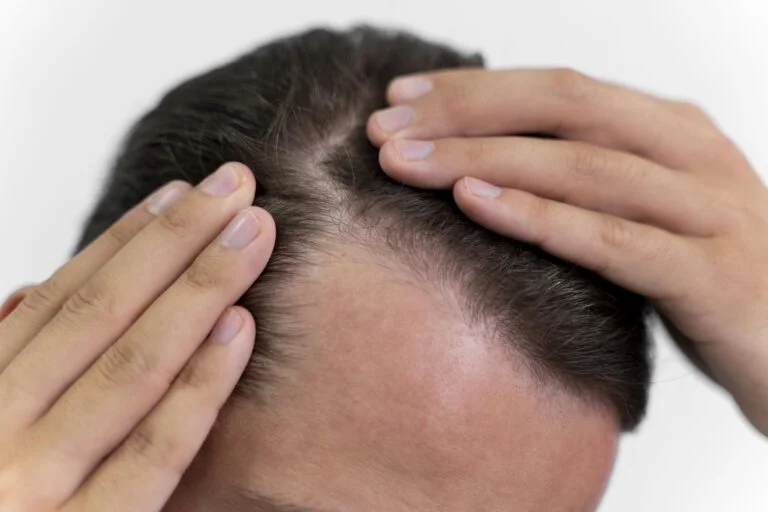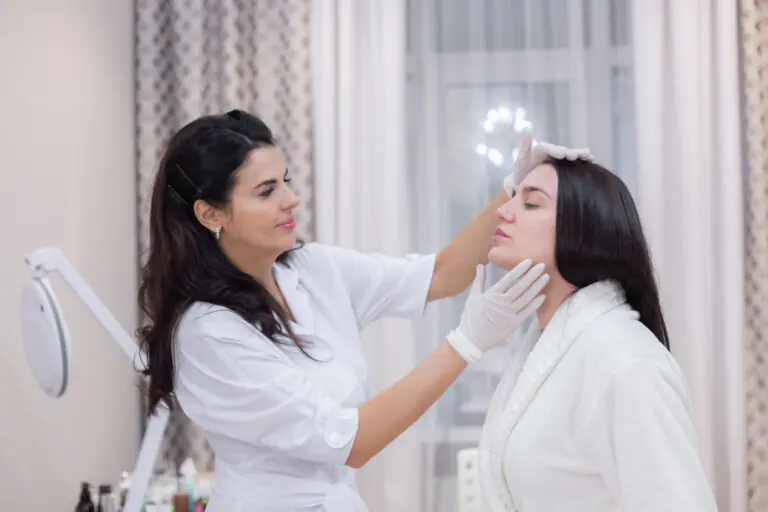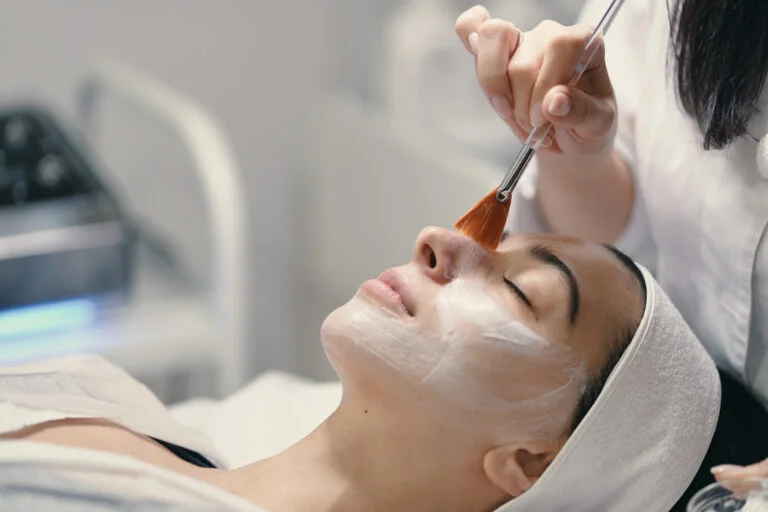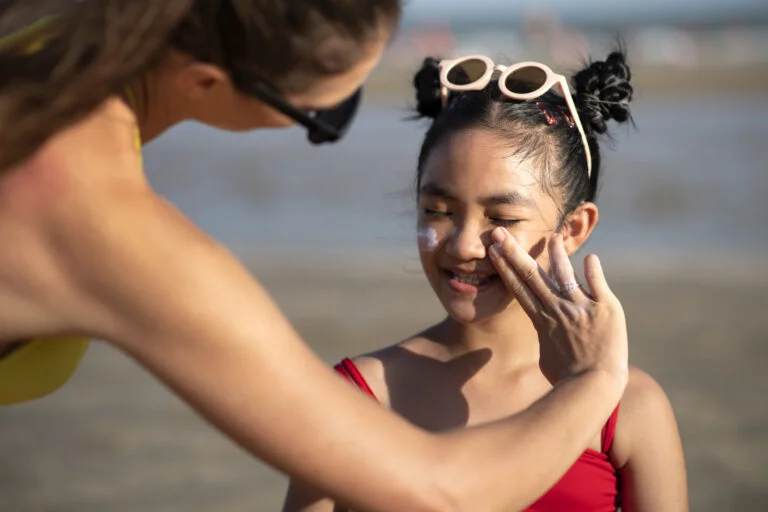Table of Contents
Is Botox Safe? Complete Guide for Men
Botox, derived from botulinum toxin type A, is the most popular cosmetic and medical treatment performed today. As one of the cosmetic procedures for men, it is known for its ability to smooth wrinkles and fine lines. Botox also offers therapeutic benefits for migraines, hyperhidrosis, and muscle spasms. Its increasing popularity for wrinkle treatment for men and women highlights its versatility and effectiveness in enhancing both appearance and quality of life.
In this guide, we’ll explore whether Botox is truly safe, how it works, and how to ensure the best results from treatment using Botox safety measures for men. Whether you’re considering Botox for the first time, seeking more information or Botox recovery tips, this guide is your trusted resource.
“Is Botox Really Safe?”
Botox safety measures for men have been thoroughly tested, and Botox is FDA-approved for both cosmetic and medical use. When Botox is administered by a qualified professional (Chapel Hill), it is considered very safe.
FDA-Approved: Botox has been regulated for over two decades, ensuring its safety for cosmetic and therapeutic use.
Mild Side Effects: Most people experience only minor side effects like redness or swelling at the injection site.
Qualified Providers Matter: The key to safety lies in choosing experienced and certified professionals.
What is Botox and How Does it Work?
Overview of Botox
Botox is a purified protein derived from Clostridium botulinum, a naturally occurring bacterium. When used in small, controlled doses, Botox wrinkle treatment for men temporarily relaxes muscles by blocking nerve signals, effectively reducing the appearance of wrinkles and addressing various medical concerns.
FDA Approval: Botox received FDA approval in 2002 for cosmetic use and is also approved for medical conditions such as chronic migraines and hyperhidrosis.
Broad Applications: Its efficacy extends to areas like the forehead (Botox forehead lift), crow’s feet, and frown lines, making it a versatile option for various concerns.
FDA Approval of Botox for Cosmetic and Medical Treatments
Botox, derived from botulinum toxin type A, has undergone rigorous clinical trials and regulatory evaluations to earn FDA approval for both cosmetic and medical applications. Here’s a breakdown of its approval process and uses:
Cosmetic FDA Approval
In 2002, the FDA approved Botox Cosmetic to temporarily reduce moderate-to-severe frown lines, also known as glabellar lines, in adults. Since then, its approval has expanded to include additional treatment areas such as:
Forehead lines (2017)
Crow’s feet (lateral canthal lines, 2013)
These approvals are based on studies demonstrating the safety and effectiveness of Botox wrinkle treatment for men in relaxing facial muscles that cause dynamic wrinkles, delivering a smoother and more youthful appearance.
Medical FDA Approval
Botox has also been approved for a wide range of therapeutic uses, including:
Chronic migraines (2010): Approved for adults experiencing 15 or more headache days per month.
Hyperhidrosis (2004): Treats severe underarm sweating when topical treatments are ineffective.
Cervical dystonia (2000): Relieves neck pain and abnormal head positioning caused by muscle spasms.
Overactive bladder (2013): Reduces symptoms such as frequent urination and urgency.
Strabismus and blepharospasm (1989): The first medical approval, addressing crossed eyes and uncontrollable eyelid spasms.
Rigorous Testing and Ongoing Monitoring
Botox underwent extensive clinical trials before receiving FDA approval. These studies assessed its safety, efficacy, and side effect profile. The FDA continues to monitor its use through post-market surveillance and adverse event reporting to ensure patient safety.
By following strict regulatory guidelines, Botox has proven to be a versatile and safe treatment option for both cosmetic procedures for men and addressing a variety of medical conditions. Always consult a board-certified doctor on its suitability for your needs.
How Botox Works in the Body
The primary mechanism of Botox is the temporary inhibition of acetylcholine release at neuromuscular junctions, preventing muscle contractions.
Common Treatment Areas:
Forehead lines (using Botox forehead lift)
Crow’s feet (around the eyes)
Glabellar lines (frown lines between the eyebrows using Botox eyebrow)
Timeline of Effects: Results typically appear within 5-7 days and last 3-6 months.
Is Botox Safe? An In Depth Analysis
FDA Approval and Regulation
Botox’s journey to FDA approval began with its medical applications in treating conditions like strabismus and blepharospasm. Its cosmetic potential was later recognized, leading to its official approval for wrinkle treatment or reduction for men.
Global Standards: Botox is approved and regulated worldwide, reflecting its proven safety profile through Botox safety measures for men.
Common Myths About Botox Safety
8 Common Myths About Botox Debunked
Botox is a widely used treatment for both cosmetic and medical purposes, yet many myths persist about its safety, effectiveness, and results. Let’s separate fact from fiction by addressing some of the most common misconceptions:
1. Botox Is Toxic to the Body
Myth: Botox is derived from a neurotoxin, so it must be dangerous.
Fact: While Botox originates from botulinum toxin type A, it is carefully purified and administered in tiny, controlled doses that are safe for human use. The profile for Botox safety measures for men is well-established through FDA approval and decades of clinical use.
2. Botox Will Freeze Your Face
Myth: Botox makes your face look unnatural or expressionless.
Fact: When performed by a skilled provider, Botox wrinkle treatment for men targets specific muscles to soften wrinkles while allowing natural expressions. Overdone Botox may lead to an unnatural look, but proper technique ensures a balanced appearance.
3. Botox Is Only for Women
Myth: Botox is exclusively a cosmetic treatment for women.
Fact: Botox cosmetic procedures for men (sometimes called “Brotox”) are increasingly used for both aesthetic and medical concerns. Common treatment areas for men include frown lines, forehead wrinkles (Botox forehead lift), and crow’s feet.
4. Botox Is Only for Wrinkles
Myth: Botox has no use outside of cosmetic wrinkle reduction.
Fact: In addition to smoothing wrinkles, Botox is FDA-approved for treating medical conditions such as chronic migraines, excessive sweating (hyperhidrosis), muscle spasms, and overactive bladder.
5. Botox Is Permanent
Myth: Once you get Botox, the effects last forever.
Fact: Botox results are temporary, typically lasting 3-6 months depending on the individual. Regular treatments are needed to maintain results, but this allows for adjustments based on changing needs and goals.
6. Botox Is Painful
Myth: Botox injections are extremely painful.
Fact: Most people report only minor discomfort during the injection process, often described as a small pinch or sting. Topical numbing creams or ice can be used to minimize any discomfort.
7. Botox Is Addictive
Myth: Using Botox will lead to addiction.
Fact: Botox is not chemically addictive. However, individuals may choose to continue treatments because they enjoy the aesthetic or therapeutic benefits. Stopping Botox simply means the treated areas will return to their natural state over time.
8. Botox Is Only for Older People
Myth: Botox is only for individuals with visible wrinkles or signs of aging.
Fact: Preventative Botox treatment is commonly used by younger people (in their 20s and 30s) to delay the onset of fine lines and wrinkles. This approach is supported by its ability to reduce repetitive muscle movements that lead to wrinkles over time.
Understanding the Risks
While Botox is generally safe, it’s essential to understand potential risks:
Mild Side Effects: Redness, swelling, and minor bruising at the injection site.
Rare Complications: Issues like droopy eyelids or uneven results can occur if improperly administered.
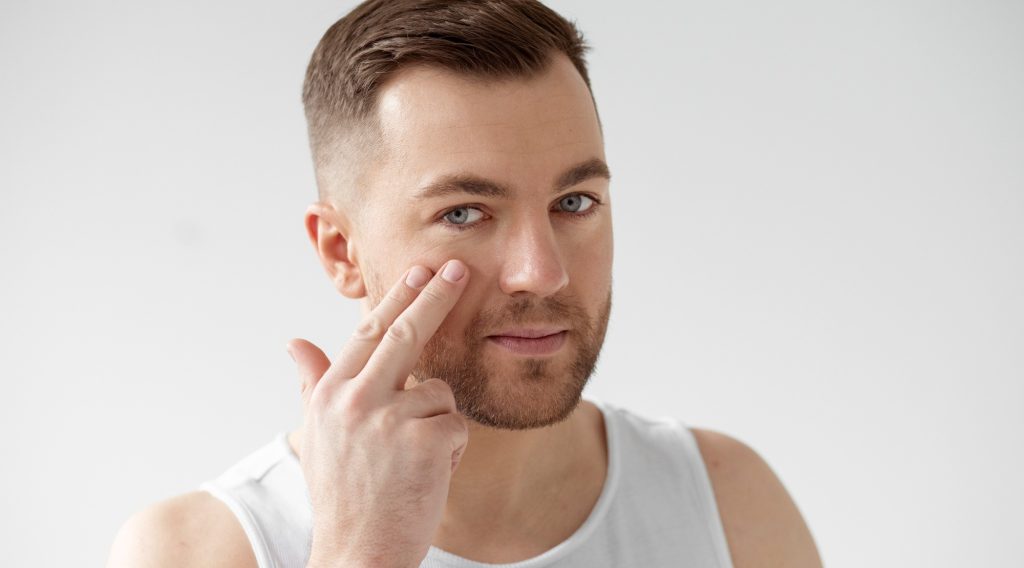
Rare Side Effects of Botox: Droopy Eyelid and Uneven Results
While Botox is generally safe and well-tolerated, rare side effects like droopy eyelid (ptosis) and uneven results can occasionally occur. Here’s a closer look at these side effects and why they happen:
1. Droopy Eyelid (Ptosis)
What is it?
Droopy eyelid, or ptosis, is a temporary condition where the upper eyelid sags, partially covering the eye.
Why does it happen?
Misplaced Injection: If Botox diffuses into the muscles responsible for lifting the eyelid (levator palpebrae superioris), it can temporarily weaken the muscle and cause drooping.
Overuse of Product: Using an excessive amount of Botox in areas near the eyelid increases the risk of migration.
Anatomical Factors: Some individuals naturally have weaker eyelid muscles or an eyelid structure that makes them more susceptible to ptosis.
How common is it?
Droopy eyelid occurs in less than 3% of cases and typically resolves on its own within 3-6 weeks as the effects of Botox wear off.
2. Uneven Results
What is it?
Uneven results refer to asymmetry in facial appearance after Botox eyebrow, such as one eyebrow arching higher than the other or uneven smoothing of wrinkles.
Why does it happen?
Unequal Dosing: Administering Botox in unequal amounts on both sides of the face can lead to asymmetry.
Muscle Variability: Natural differences in muscle strength or activity between the left and right sides of the face can impact results.
Movement During Treatment: Slight movements during injection can cause inconsistent product placement.
Provider Inexperience: Inexperienced injectors may lack the precision needed to ensure symmetry.
How common is it?
Uneven results are relatively rare with experienced providers and can often be corrected with a follow-up session to adjust the distribution of Botox.
Managing Rare Side Effects
For Droopy Eyelid:
Prescription eye drops (apraclonidine) can help temporarily lift the eyelid.
Avoid lying down for 4 hours and refrain from vigorous activity immediately after treatment to reduce the risk of product migration.
For Uneven Results:
Follow-up treatments can address asymmetry by adding small doses of Botox to under-treated areas.
How to Minimize Risks
Choose a Qualified Provider: When searching for Botox cost near me, choose a certified dermatologist or licensed practitioner with extensive experience to ensure precise injection placement and dosing.
Communicate Clearly: Discuss your goals, medical history, and any previous Botox treatments with your provider.
Follow Aftercare Instructions: Avoid activities that increase the risk of migration, such as rubbing the treated area or lying flat too soon after treatment.
By understanding Botox safety measures for men, potential side effects, and aftercare, patients can make informed decisions and minimize the likelihood of complications. While exploring Botox costs near me or looking into cosmetic procedures for men, choosing a reputable provider is essential for safety and satisfaction.
Who is eligible to receive Botox?
Ideal Candidates
Botox is suitable for adults aged 20-65 seeking cosmetic or medical improvements. Candidates often include:
Cosmetic: As a wrinkle treatment for men for those wishing to reduce fine lines or prevent wrinkles.
Medical: Patients managing migraines, hyperhidrosis, or TMJ disorders.
Who Should Avoid Botox?
While Botox is safe for most, certain individuals should avoid it:
Allergies: Those allergic to botulinum toxin or its ingredients.
Neurological Disorders: Conditions like ALS or myasthenia gravis may increase risks.
The Advantages of Botox: More Than Just Wrinkle Reduction
Cosmetic Benefits
Reduces fine lines and wrinkles.
Prevents future wrinkles when preventative Botox is used.
Enhances facial harmony with precise treatments.
Medical Uses
Migraines: Botox relaxes muscles that trigger migraines.
Hyperhidrosis: Reduces excessive sweating by targeting sweat glands.
Muscle Disorders: Treats spasticity and TMJ disorders effectively.
How can you ensure the safe use of Botox?
Choosing a Qualified Provider
Choosing a Qualified Provider to Ensure the Safe Use of Botox
Selecting the right professional to administer Botox is crucial for ensuring safety, achieving optimal results, and minimizing the risk of complications. Here are key considerations when choosing a provider:
1. Verify Credentials and Training
Board-Certified Professionals: Look for a provider who is a board-certified dermatologist, plastic surgeon, or licensed medical practitioner specializing in aesthetic treatments.
Advanced Training: Ensure the provider has specific training and experience in administering Botox injections.
2. Research the Provider’s Reputation
Read Reviews: Check online reviews and testimonials from previous patients to gauge the provider’s expertise and patient satisfaction.
Ask for Before-and-After Photos: View examples of their work to confirm they consistently deliver natural-looking results.
3. Confirm the Clinic’s Standards
Licensed Facility: Ensure the procedure will be performed in a reputable clinic or medical spa that complies with Botox safety measures for men and hygiene standards.
Quality-Controlled Products: Verify that the clinic uses FDA-approved Botox from a reliable source and not counterfeit products.
4. Avoid Unlicensed Practitioners
Beware of “Botox Parties” or DIY Treatments: Injections administered outside of a medical setting or by unqualified individuals can increase the risk of complications like infections, uneven results, or adverse reactions.
Ask About Credentials: If the price seems unusually low, it might indicate that the practitioner is not properly licensed or the product is not genuine.
5. Prioritize Communication
Comprehensive Consultation: A qualified provider will take the time to discuss your goals, assess your facial anatomy, and explain the procedure.
Transparency: They will inform you of potential risks, expected outcomes, and aftercare instructions.
Why Choosing the Right Provider Matters
A qualified provider ensures proper dosage, precise injection placement, and adherence to Botox safety measures for men, significantly reducing risks like droopy eyelids, uneven results, or allergic reactions. By taking the time to choose a licensed and experienced professional, you can confidently undergo Botox treatments with peace of mind and excellent results.
Pre Treatment Tips
What to Discuss During a Botox Consultation
A thorough consultation is a vital step in ensuring a safe and effective Botox treatment. It allows you and your provider to align on expectations, address concerns, and assess your suitability for the procedure. Here are the key points to discuss:
1. Medical History
Your medical history plays a critical role in determining if Botox is safe for you. Be transparent about:
Allergies: Share any known allergies, particularly to botulinum toxin or its ingredients.
Medical Conditions: Mention conditions like neuromuscular disorders (e.g., myasthenia gravis) or previous issues with Botox.
Pregnancy or Breastfeeding: Botox is not recommended for those who are pregnant or nursing.
Medications: Inform your provider about all medications, including:
Blood thinners (e.g., aspirin, warfarin).
Muscle relaxants.
Antibiotics (e.g., aminoglycosides).
Supplements (e.g., vitamin E, ginkgo biloba) that may increase bruising risks.
Previous Treatments: Disclose prior Botox injections or other cosmetic procedures to help guide treatment planning.
2. Desired Outcomes
Clearly communicating your aesthetic goals ensures realistic expectations and tailored results. Discuss:
Areas of Concern: Identify specific areas you want to treat, such as forehead lines, crow’s feet, or frown lines.
Natural vs. Dramatic Results: Express whether you prefer subtle changes or a more noticeable transformation.
Prevention or Correction: If you’re seeking Botox for preventative purposes, clarify this with your provider.
Medical Benefits: If using Botox for medical conditions like migraines or hyperhidrosis, highlight your symptoms and desired relief.
3. Treatment Expectations
Your provider should outline what to expect during and after the procedure, including:
Number of Units Needed: Understand the recommended dosage based on your anatomy and goals.
Procedure Duration: Most sessions take 10–20 minutes, but this may vary depending on the treatment areas.
Recovery Time: Discuss potential downtime and when you can expect to see results.
4. Risks and Side Effects
A reputable provider will educate you about the risks, even if they’re minimal. Topics include:
Common Side Effects: Redness, swelling, or bruising at the injection site.
Rare Side Effects: Uneven results, droopy eyelids, or an allergic reaction.
Aftercare Instructions: Tips to minimize risks, such as avoiding strenuous activities or touching the treated area.
5. Long-Term Plan
If you’re interested in maintaining results, discuss:
Treatment Frequency: Botox typically lasts 3–6 months.
Complementary Treatments: Consider whether additional procedures, like dermal fillers or chemical peels, could enhance your overall results.
Botox Cost and Budget: Clarify pricing, including how many units you’ll need and the total cost of the procedure.
6. Questions and Concerns
Use the consultation as an opportunity to ask questions about the procedure, provider’s experience, and any worries you might have.
By discussing these topics openly, you and your provider can ensure a safe, satisfying Botox experience tailored to your needs and expectations.
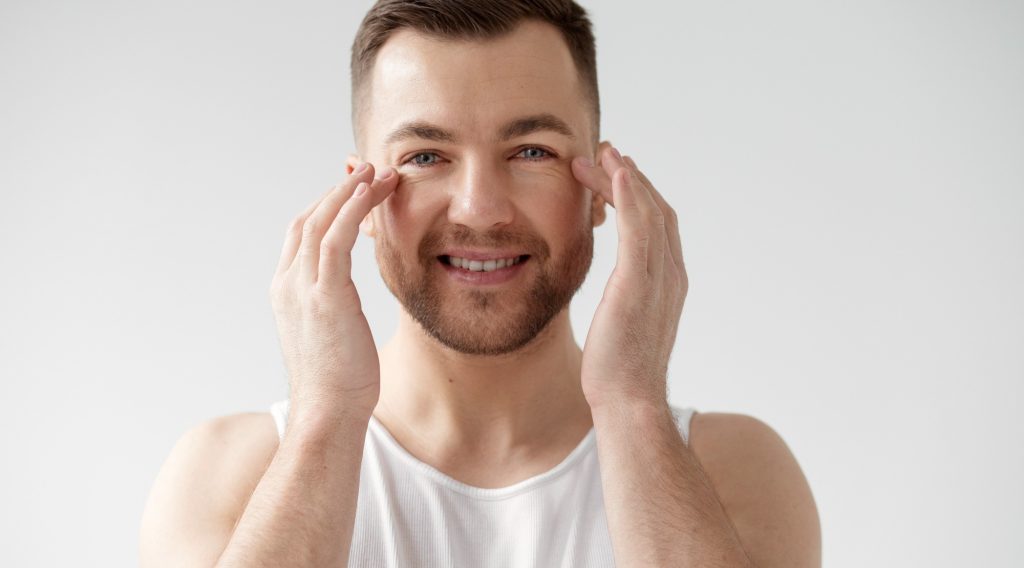
Post Treatment Care
Guidelines for Botox Aftercare: Minimizing Side Effects
Proper aftercare is essential to ensure optimal results and minimize potential side effects following Botox treatment. Here are detailed guidelines to follow:
1. Avoid Touching the Treated Area
Why: Touching, rubbing, or massaging the injection site can cause the Botox to spread to unintended areas, potentially leading to uneven results.
What to Do: Avoid touching, pressing, or applying makeup to the treated areas for at least 4–6 hours post-procedure.
2. Stay Upright
Why: Lying down too soon after treatment can increase the risk of Botox migrating to unintended areas.
What to Do: Remain in an upright position for at least 4 hours after your session.
3. Avoid Strenuous Activities
Why: Intense exercise can increase blood flow, potentially dispersing Botox and causing suboptimal results.
What to Do: Avoid exercise, heavy lifting, or vigorous physical activities for 24 hours after treatment.
4. Skip Alcohol and Blood-Thinning Medications
Why: Alcohol and blood-thinning medications (like aspirin or ibuprofen) can increase the risk of bruising at the injection sites.
What to Do: Refrain from consuming alcohol or taking blood-thinners for 24–48 hours post-treatment, unless directed otherwise by your provider.
5. Use Cold Compresses for Swelling or Bruising
Why: Mild swelling or bruising is common at the injection site. Cold compresses can reduce inflammation and soothe discomfort.
What to Do: Gently apply a cold compress (wrapped in a clean cloth) to the treated area for 10–15 minutes at a time. Avoid applying direct ice to the skin.
6. Avoid Heat and Sun Exposure
Why: Heat and UV rays can exacerbate swelling or redness.
What to Do: Stay out of the sun, avoid tanning beds, hot tubs, saunas, and steam rooms for at least 48 hours.
7. Skip Facial Treatments and Massages
Why: Facials, chemical peels, or massages can disrupt Botox placement or spread the product to unintended areas.
What to Do: Avoid all facial treatments or massages for at least 1 week post-treatment.
8. Monitor for Unusual Symptoms
Why: While rare, complications like droopy eyelids or an allergic reaction may occur.
What to Do: Contact your provider immediately if you notice:
Difficulty swallowing or breathing.
Persistent swelling, redness, or pain.
Drooping in areas not treated.
9. Stay Hydrated and Practice Healthy Skin Care
Why: Proper hydration and skincare promote healing and enhance treatment results.
What to Do: Drink plenty of water and maintain a gentle skincare routine. Avoid harsh exfoliants or active ingredients like retinol for a few days.
10. Follow Up with Your Provider
Why: A follow-up visit ensures your results meet expectations and addresses any concerns.
What to Do: Schedule a follow-up appointment within 2 weeks of your treatment if needed.
By adhering to these aftercare guidelines, you can maximize the effectiveness of your Botox treatment while minimizing potential side effects. Always follow the specific advice given by your provider, as individual needs may vary.
What to Expect During a Botox Session
A typical Botox session lasts 10-30 minutes. A fine needle is used to inject Botox into targeted areas. Most patients describe the sensation as a mild pinch.
Recovery Time
Downtime: Minimal; most people resume normal activities immediately.
Results: Visible within 3-7 days and last 3-6 months.
Botox Safety
Unique Needs: Men typically have thicker skin and stronger facial muscles, requiring tailored approaches.
Common Areas: Forehead lines, crow’s feet, and frown lines.
Maintaining Natural Results
Botox is a powerful tool for achieving a youthful and refreshed appearance, but overuse or improper technique can lead to an unnatural look. By following these strategies, you can maintain subtle, natural results that enhance your features without looking “overdone.”
1. Choose a Skilled Provider
Experience Matters: Select a certified dermatologist or licensed injector with a track record of creating natural results. Providers with expertise understand facial anatomy and the right dosage for each area.
Personalized Consultation: Discuss your aesthetic goals with your provider. A good practitioner will aim for results that preserve your unique expressions.
2. Start Conservatively
Less is More: Begin with a low dose of Botox in targeted areas. It’s easier to add more in follow-up treatments than to correct over-treatment.
Focus on Problem Areas: Wrinkle treatment for men treats specific wrinkles or lines rather than attempting to erase every imperfection, maintaining your natural facial movements.
3. Space Treatments Appropriately
Avoid Over-Treatment: Stick to the recommended interval of 3-6 months between sessions. Overuse can result in frozen features or diminished effectiveness over time.
Long-Term Planning: Plan treatments with your provider to ensure consistent, gradual results.
4. Complement with Other Treatments
Combine Approaches: Pair Botox with complementary procedures like dermal fillers, microneedling, or laser resurfacing to address other skin concerns without over-relying on Botox.
Skin Care Routine: Use anti-aging skincare products, sunscreen, and hydrating treatments to enhance and prolong the effects of Botox.
5. Maintain Realistic Expectations
Subtle Enhancements: Understand that Botox won’t completely erase deep wrinkles or dramatically alter your appearance. Its purpose is to soften lines and prevent new ones from forming.
Gradual Changes: Embrace the gradual transformation instead of expecting immediate perfection.
6. Avoid Over-Relaxation of Muscles
Targeted Injections: Skilled providers inject precise amounts of Botox in specific muscles to soften wrinkles while allowing natural movement.
Balanced Application: Avoid treating too many areas at once, which can lead to an unnatural, stiff look.
7. Commit to a Healthy Lifestyle
Protect Your Skin: Use SPF daily to prevent new wrinkles caused by sun damage.
Stay Hydrated: Well-hydrated skin enhances the overall look of Botox.
Minimize Stress: Stress management can help slow wrinkle formation and prolong the effects of Botox.
8. Regular Follow-Ups with Your Provider
Monitor Results: Schedule periodic check-ins to assess your results and make necessary adjustments.
Open Communication: Share any concerns or changes in your goals with your provider to fine-tune future treatments.
By focusing on moderation, expert care, and a holistic approach to skincare, Botox can deliver natural, elegant results that enhance your features while preserving your individuality.
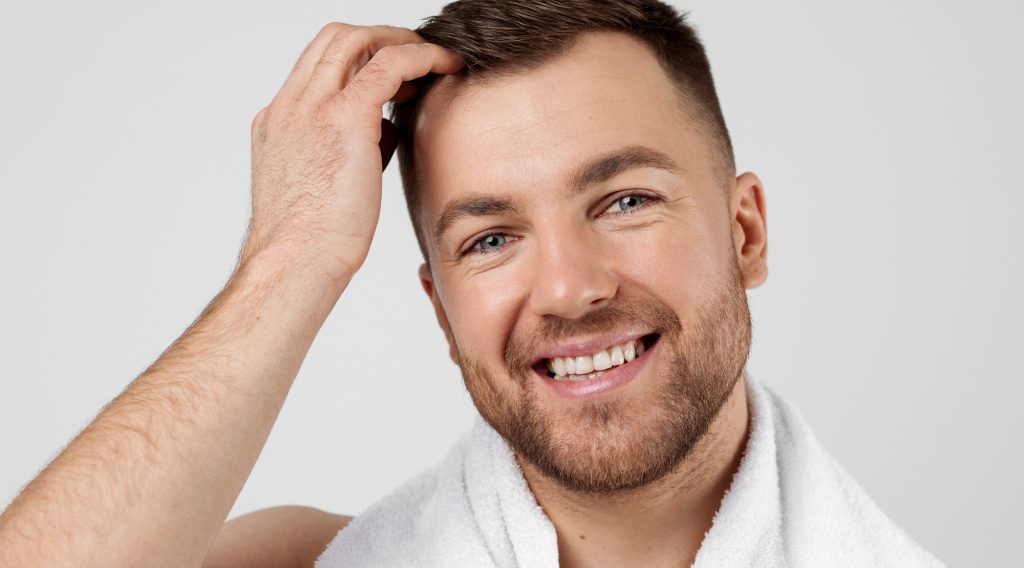
Understanding Men’s Botox Needs
Differences in Male Facial Anatomy for Botox
Understanding the unique characteristics of male facial anatomy is crucial for achieving optimal results with Botox. Men’s faces are structurally distinct from women’s, requiring a tailored approach to treatment. Here are the key differences:
1. Thicker Skin
Characteristics: Men typically have thicker dermal layers due to higher collagen density.
Implications for Botox: The thicker skin may require slightly higher doses of Botox to penetrate effectively and relax targeted muscles.
2. Stronger Facial Muscles
Characteristics: Men’s facial muscles are generally larger and stronger, especially in areas like the forehead and jaw.
Implications for Botox: This strength often means men may need higher Botox units compared to women for the same treatment area. It also affects the longevity of the results, as stronger muscles may cause wrinkles to return more quickly.
3. Brow Shape and Position
Characteristics: Men’s brows tend to be flatter and sit lower on the face, creating a more masculine appearance.
Implications for Botox eyebrow: The injector must avoid over-arching the brows, as this could feminize the appearance. The goal is to maintain a natural, masculine brow line while reducing forehead wrinkles.
4. Jawline Structure
Characteristics: Men often have a more defined, square jawline due to the prominence of the masseter muscles.
Implications for Botox: In treatments like masseter reduction or jawline slimming, subtlety is key to ensure a balanced and masculine look.
5. Deeper Wrinkles
Characteristics: Men are more likely to develop deeper dynamic wrinkles due to stronger muscle contractions and delayed adoption of skincare routines.
Implications for Botox: The treatment plan may require a higher dose or additional sessions to smooth out these pronounced lines effectively.
6. Hairline and Beard Density
Characteristics: Men’s hairlines and facial hair can affect injection site accessibility.
Implications for Botox: Injectors need to navigate around beard growth and hairlines to ensure precise application without complications.
7. Broader Forehead
Characteristics: Men tend to have broader and taller foreheads compared to women.
Implications for Botox: Larger treatment areas require strategic placement of injections to achieve balanced results across the forehead.
By accounting for these anatomical differences, a skilled Botox provider can deliver natural-looking, effective results that enhance a man’s appearance while preserving his unique masculine features.
Common Treatment Areas for Men with Botox
Men increasingly turn to Botox to address signs of aging while maintaining a natural, masculine appearance. The most common treatment areas for men include:
1. Forehead Lines
Description: Horizontal lines that appear across the forehead due to repetitive muscle movement, like raising the eyebrows.
Why Men Treat This Area: These lines can make the face appear older or perpetually stressed. Botox smooths the forehead while maintaining natural expressions.
2. Frown Lines (Glabellar Lines)
Description: Vertical lines that form between the eyebrows, often referred to as “11 lines.”
Why Men Treat This Area: These lines can create a stern, angry, or tired look. Botox relaxes the underlying muscles to give a more approachable and refreshed appearance.
3. Crow’s Feet
Description: Fine lines that develop around the outer corners of the eyes from smiling or squinting.
Why Men Treat This Area: Crow’s feet can be one of the first noticeable signs of aging. Treating this area helps men achieve a more youthful and rested look while preserving warmth in their smile.
4. Brow Area (Brow Lift)
Description: Sagging or drooping brows that can occur with age, creating a tired or heavy-eyed appearance.
Why Men Treat This Area: Botox provides a subtle lift to the brow area, improving the overall appearance without feminizing the face.
5. Jawline and Neck (Masseter Botox)
Description: Large jaw muscles caused by clenching, grinding, or natural anatomy can make the jaw appear overly prominent or square.
Why Men Treat This Area: Botox can soften the masseter muscles for a more defined jawline or to relieve conditions like teeth grinding (bruxism) or TMJ disorders.
6. Bunny Lines
Description: Fine lines that appear on the bridge of the nose when squinting or laughing.
Why Men Treat This Area: Botox smooths these lines, offering a polished look that enhances overall facial harmony.
7. Chin (Dimpling or “Orange Peel” Texture)
Description: Dimpling or uneven texture in the chin area caused by overactive mentalis muscles.
Why Men Treat This Area: Botox smooths the chin surface for a balanced, youthful appearance.
These treatment areas help men achieve subtle yet effective improvements in their appearance, maintaining their confidence and a rugged, masculine look.
Choosing a Certified Botox Provider
Importance of selecting an experienced dermatologist familiar with male facial structure and avoiding unlicensed providers or DIY Botox kits.
Importance of Selecting an Experienced Dermatologist Familiar with Male Facial Structure
Choosing a provider with expertise in administering Botox for men is critical for achieving safe, natural-looking results that align with male aesthetics. Here’s why:
1. Expertise in Male Facial Anatomy
Thicker Skin and Stronger Muscles: Men typically have thicker skin and stronger facial muscles than women, requiring precise Botox dosing and technique to avoid overcorrection or unnatural results.
Maintaining Masculine Features: An experienced dermatologist understands how to enhance a man’s appearance while preserving masculine traits, such as a strong jawline or defined brows.
2. Custom-Tailored Approach for Men
Different Treatment Goals: Men often seek Botox to soften deep lines while maintaining a rugged, natural look. An experienced provider can adjust the dosage and injection sites to achieve these specific goals.
Avoiding Feminization: Overuse of Botox in areas like the forehead or around the eyes can lead to overly smooth skin, which may appear less masculine. Skilled providers avoid such outcomes by tailoring the treatment to male aesthetics.
Avoiding Unlicensed Providers
1. Risks of Inexperienced Injectors
Improper Techniques: Injections performed by unlicensed or underqualified individuals can lead to uneven results, droopy eyelids, or excessive relaxation of facial muscles.
Health Complications: Using counterfeit or improperly stored products can increase the risk of infections, allergic reactions, or poor outcomes.
2. Lack of Regulatory Oversight
No Accountability: Unlicensed providers are not bound by medical ethics or regulatory standards, leaving patients vulnerable to unsafe practices.
Uncertified Venues: Places like Botox parties or salons often lack the sterile environment and expertise required for safe treatment.
Choosing a Certified Dermatologist
When selecting a provider, prioritize board-certified dermatologists or licensed professionals with experience in treating male patients. They ensure:
Use of authentic, FDA-approved products.
A consultation to discuss your goals, medical history, and individual facial structure.
Proper aftercare guidance for long-lasting, safe results.
By selecting an experienced professional, who is comfortable treating men, men can confidently achieve their desired results while minimizing risks, maintaining their masculine features, and enjoying the full benefits of Botox.
Pre-Treatment Safety Guidelines for Botox for Men
Proper preparation is essential to ensure the success and safety of Botox treatments. Men often have unique anatomical considerations, such as thicker skin and stronger facial muscles, which require specific guidance. Following these pre-treatment safety guidelines or Botox for men can help achieve optimal results while minimizing the risk of complications.
1. Disclose Your Medical History
Share your full medical history with your provider during the consultation.
Mention any allergies, ongoing medical conditions, or prior Botox treatments.
Notify the provider if you are on medications like blood thinners, muscle relaxants, or antibiotics, as these may affect the treatment.
2. Avoid Blood-Thinning Substances
Stop taking blood-thinning medications such as aspirin, ibuprofen, or certain supplements (e.g., fish oil, vitamin E) 7-10 days before treatment.
These substances can increase the risk of bruising or bleeding at the injection sites.
Consult your doctor before discontinuing any prescribed medication.
3. Refrain from Alcohol
Avoid alcohol for at least 24-48 hours prior to your appointment.
Alcohol can increase blood flow, raising the likelihood of bruising and swelling.
4. Pause Strenuous Exercise
Limit intense physical activity on the day before and the day of your treatment.
Exercise can elevate your heart rate and blood pressure, which may exacerbate swelling or bruising.
5. Maintain Clean Skin
Cleanse your face thoroughly before the appointment to remove dirt, oil, or product residue.
Avoid applying any lotions, creams, or serums on the day of treatment.
6. Avoid Skin Treatments Before Botox
Refrain from getting chemical peels, facials, or microdermabrasion at least one week before the procedure.
These treatments can irritate the skin and increase sensitivity at the injection sites.
7. Communicate Your Aesthetic Goals
Clearly discuss your desired outcomes with your provider.
Male Botox wrinkle treatment for men often aims to soften wrinkles while maintaining a masculine appearance. Ensure your provider understands your preferences to achieve balanced, natural results.
8. Plan Ahead for Recovery
Schedule your appointment on a day when you can relax afterward with Botox recovery tips without rushing into strenuous activities or commitments.
Arrange transportation if you feel you might need assistance after the procedure.
9. Avoid Over-The-Counter Anti-Inflammatory Products
Topical products like retinol or glycolic acid should be avoided for a few days leading up to treatment to reduce the risk of skin irritation.
10. Mental Preparation
Stay calm and relaxed before your appointment.
Remember that Botox injections are quick, minimally invasive, and require little downtime.
By following these pre-treatment safety guidelines, men can enhance the effectiveness of their Botox sessions and reduce the likelihood of side effects. Always consult a qualified and experienced provider to ensure a safe and satisfying experience tailored to your unique needs.
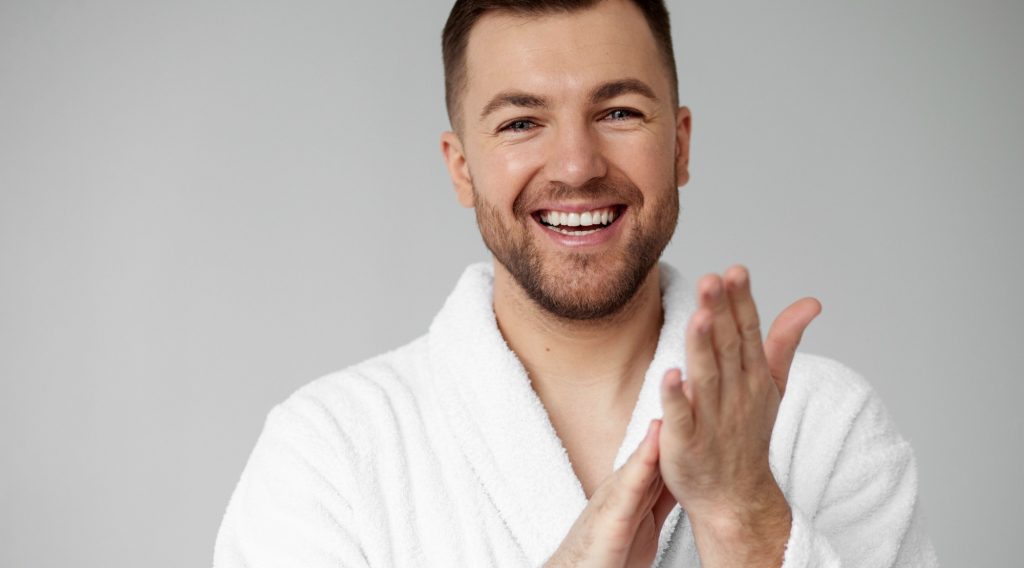
Post-Treatment Care for Men
Proper aftercare is essential to ensure the best results from Botox while minimizing the risk of complications. Men often have unique facial anatomy, such as thicker skin and stronger muscles, which can influence the effectiveness of the treatment. Following these Botox recovery tips will help maintain a smooth recovery and optimal results.
1. Avoid Touching or Rubbing the Treated Area
Do not touch, press, or massage the injection sites for at least 24 hours.
This prevents the Botox from spreading to unintended areas, which could lead to uneven results.
2. Stay Upright for a Few Hours
Avoid lying down or bending over for at least 4-6 hours post-treatment.
This helps ensure the Botox settles correctly in the targeted muscles.
3. Skip Intense Physical Activities
Refrain from strenuous exercise or heavy lifting for 24-48 hours.
Physical exertion can increase blood flow and raise the risk of bruising or swelling.
4. Avoid Alcohol and Blood-Thinning Medications
Stay away from alcohol and medications like aspirin or ibuprofen for 24 hours.
These substances can exacerbate bruising at the injection sites.
5. Be Gentle with Your Skin
Use a gentle cleanser to wash your face, and avoid harsh scrubbing for 24 hours.
Steer clear of facials, chemical peels, or microdermabrasion for at least a week.
6. Skip Heat and Sun Exposure
Avoid hot showers, saunas, steam rooms, or tanning beds for 24-48 hours.
Heat can increase swelling and reduce the effectiveness of the Botox.
7. Use Cold Compresses for Swelling or Redness
If mild swelling or redness occurs, apply a cold compress for 10-15 minutes at a time.
Avoid applying ice directly to the skin; wrap it in a clean cloth.
8. Watch for Side Effects
Mild side effects like redness, swelling, or minor bruising are normal and usually resolve within a few days.
Contact your provider if you experience severe symptoms like drooping eyelids, difficulty swallowing, or vision changes.
9. Resume Regular Activities Gradually
Most men can return to work and light activities immediately after the procedure.
Follow your provider’s guidance on when to resume more intense activities or skincare routines.
10. Plan for Maintenance Treatments
Botox results typically last 3-6 months. Schedule follow-up appointments to maintain your desired appearance.
Avoid over-treating to preserve a natural and balanced look.
11. Protect Your Skin
Apply sunscreen with at least SPF 30 daily to protect the treated areas from UV damage.
This is particularly important as sun exposure can accelerate skin aging.
12. Patience is key
Full effects may take up to 7-14 days to become visible.
Avoid evaluating the results too early, as initial swelling or redness may temporarily obscure the outcome.
By adhering to these post-treatment care guidelines or Botox recovery tips, men can maximize the benefits of Botox while maintaining a natural and masculine appearance. Always consult your provider if you have concerns or questions during recovery.
Frequency of Botox Treatments
How Often Should Men Get Botox to Maintain Results?
Men typically need Botox treatments every 3 to 6 months to maintain optimal results. The frequency can vary based on individual factors, including the treatment area, personal goals, and how quickly their body metabolizes the product. Here’s a breakdown of key considerations for men:
1. Typical Longevity of Botox Results
Botox effects generally last about 3 to 4 months for most individuals. However, men may find their results fade slightly faster due to differences in muscle mass and activity. Men’s facial muscles tend to be thicker and stronger, which can require higher doses or more frequent touch-ups.
2. Factors Influencing Treatment Frequency
Muscle Strength: Men with stronger facial muscles, especially in the forehead or frown line areas, may need treatments closer to the 3-month mark.
Lifestyle: High levels of physical activity, such as intense workouts, can increase metabolism and reduce the duration of Botox effects.
Desired Look: Men seeking a more natural appearance may opt for less frequent treatments, while those wanting consistently smooth results may return more often.
3. Gradual Maintenance
Regular treatments can lead to longer-lasting results over time. As treated muscles become less active, the effects of Botox may last longer, potentially extending treatment intervals.
4. Customization is Key
A skilled provider will tailor the treatment plan to match the client’s unique anatomy, goals, and preferences. Regular consultations help determine the ideal schedule for maintaining results while preserving a masculine, natural appearance.
Men should plan for Botox treatments every 3 to 6 months, with adjustments based on individual needs and the advice of a qualified provider. Sticking to a consistent schedule ensures long-term benefits and helps maintain a youthful, refreshed look.
Risks of Overdoing Botox and the Importance of Moderation for a Natural Look
When it comes to Botox, more isn’t always better. Overdoing Botox can lead to unnatural results, compromise facial expressions, and even create potential medical risks. Moderation and precise application are essential to maintain a refreshed, natural appearance while avoiding complications.
Risks of Overdoing Botox
Frozen or Expressionless Face
One of the most common issues with excessive Botox is the “frozen” look, where facial muscles are over-relaxed. This can hinder natural expressions, making it difficult to convey emotions like smiling or frowning.
Asymmetry
Uneven distribution of Botox eyebrow or over-injection in certain areas can lead to facial asymmetry. For example, one eyebrow may sit higher than the other, or one side of the mouth may appear uneven.
Drooping Eyelids or Brows
Over-treatment in areas like the forehead can cause droopy eyelids or brows (known as ptosis). This occurs when the Botox spreads to unintended muscles, weakening them excessively.
Muscle Weakness or Atrophy
Repeated overuse of Botox in the same muscles can lead to muscle atrophy over time, causing the treated area to appear hollow or gaunt.
Unnatural Appearance
Overdoing Botox can result in a plastic or “overdone” appearance, where the skin looks overly smooth and unnatural, particularly in men who may prefer a rugged or masculine look.
Emotional Disconnection
Some research suggests that overly frozen facial muscles can impair nonverbal communication, making it harder for others to perceive your emotions.
The Importance of Moderation
Preserving Natural Expression
Strategic Botox application targets specific areas while leaving untreated muscles free to maintain natural movement. Moderation ensures you look rejuvenated, not artificial.
Personalized Dosage
A skilled provider tailors Botox dosages based on individual anatomy, muscle strength, and desired outcomes. This avoids unnecessary overuse and ensures balanced results.
Gradual Enhancements
Subtle, incremental treatments yield the best results. Patients can start with smaller doses and gradually build up, ensuring satisfaction without overcorrection.
Long-Term Benefits
Moderation reduces the risk of resistance to Botox, which can occur if the body produces antibodies against the product due to excessive use.
Professional Guidance
Choosing a certified provider with expertise in facial anatomy is critical. They understand how to strike the balance between achieving aesthetic goals and preserving a natural appearance.
Moderation is the key to successful Botox treatments. Overdoing Botox can lead to undesirable physical and social outcomes, but when administered carefully by a qualified professional, it offers natural, refined results. A conservative approach not only preserves facial expressions but also ensures long-term satisfaction and safety. Always consult with an experienced provider to tailor the treatment to your unique needs.
FAQ - Botox Concerns in Men
1. Are there any risks or long-term side effects specific to men?
No, the risks and side effects of Botox are the same for men and women. Mild swelling, redness, or bruising at the injection site are common but temporary.
2. Can I maintain a masculine appearance after treatment?
Yes, when performed by an experienced provider, Botox can soften wrinkles while maintaining masculine features by respecting the natural anatomy of the male face.
3. Is Botox exclusively for women? Will I be judged for getting Botox?
No, Botox is for anyone looking to enhance their appearance or treat medical concerns. It has gained popularity among men, often referred to as “Brotox,” and is widely accepted as part of modern grooming.
4. How much does men’s Botox cost near me?
Costs vary based on the number of units needed and the treatment area but typically range from $300 to $800 per session. Men often require slightly more units than women due to stronger facial muscles.
5. Is Botox a worthwhile investment compared to other grooming and skincare alternatives?
Yes, Botox provides noticeable and long-lasting results for addressing wrinkles and improving skin smoothness, complementing other grooming efforts.
6. How long before I can return to work or normal activities?
Most men can resume work and daily activities immediately after treatment, but it’s recommended to avoid intense exercise or lying down for 4-6 hours post-treatment.
7. How do I find a Botox provider experienced with male clients?
Look for certified dermatologists or specialists in cosmetic procedures for men with experience. Read reviews and ask for before-and-after photos of male patients.
8. Do I need a different approach due to having thicker skin and stronger muscles compared to women?
Yes, men’s facial anatomy requires tailored techniques, including using more units or different injection patterns, to ensure effective and natural results. Choose a provider skilled in treating male clients.
Botox, when administered correctly by a qualified professional, is a safe and highly effective treatment for both cosmetic procedures for men and medical purposes. Its widespread use and decades of research have solidified its position as one of the most trusted options for addressing aesthetic concerns and various medical conditions.
Safety of Botox
FDA Approval and Regulation
Botox has been FDA-approved since 2002 for cosmetic use, specifically to reduce fine lines and wrinkles in areas such as the forehead, crow’s feet, and frown lines. It is also FDA-approved for medical conditions, including migraines, excessive sweating (hyperhidrosis), muscle spasms, and overactive bladder. This rigorous approval process ensures the treatment meets stringent Botox for men and efficacy standards.
Administered by Certified Professionals
Botox is exceptionally safe when injected by licensed dermatologists, plastic surgeons, or trained medical professionals who understand anatomy and dosage requirements. Proper technique minimizes risks and ensures precise targeting of the muscles, preventing unwanted side effects.
Minimal Side Effects
Most side effects of Botox are mild and temporary, such as redness, swelling, or bruising at the injection site. Rare complications like droopy eyelids or uneven results are usually due to improper administration and can be avoided by choosing an experienced provider.
Short Recovery Time
Botox requires no significant downtime. Most patients resume normal activities immediately, making it a convenient option for busy lifestyles.
Benefits of Botox
Cosmetic Enhancements
Wrinkle Reduction: Botox wrinkle treatment for men effectively smooths dynamic wrinkles caused by repetitive muscle movements, such as frown lines and crow’s feet.
Prevention of Future Wrinkles: Regular preventative Botox treatments can prevent the formation of new wrinkles by limiting excessive muscle movement.
Subtle, Natural Results: When administered correctly, Botox enhances the appearance without creating an artificial or “frozen” look.
Medical Applications
Migraine Relief: Botox is FDA-approved to reduce the frequency and severity of chronic migraines by relaxing tension in the head and neck muscles.
Hyperhidrosis Management: It significantly decreases excessive sweating by blocking nerve signals to sweat glands.
Muscle Spasm Treatment: Botox alleviates conditions like cervical dystonia and muscle stiffness by relaxing overactive muscles.
TMJ and Jaw Pain Relief: For patients with temporomandibular joint (TMJ) disorders, Botox can reduce tension and associated discomfort.
Confidence Booster
Botox can improve self-esteem by enhancing appearance and alleviating medical conditions that may impact quality of life. Feeling more confident can positively influence social and professional interactions.
Customizable Treatment
Botox treatments are highly customizable to meet individual needs. Whether addressing a single concern in cosmetic procedures for men or treating multiple medical issues, the flexibility of Botox makes it a versatile solution.
Non-Surgical and Reversible
Unlike surgical options, Botox is non-invasive, with results that are temporary and reversible. This allows patients to experiment with treatments without committing to permanent changes.
Conclusion
When administered by a qualified professional, Botox is a safe, effective, and versatile option for improving both aesthetic and medical concerns. Its benefits extend far beyond wrinkle reduction, making it a powerful tool for enhancing quality of life. As with any medical procedure, ensuring safety begins with choosing a trusted provider and following pre- and post-treatment care guidelines.


